Welcome to our blog post all about fascinating Arizona facts for kids! From the iconic Grand Canyon to the diverse wildlife and natural wonders found throughout the state, Arizona is a true gem waiting to be explored. Whether you’re a younger kid looking to learn about the state’s special nickname or an older kid eager to discover why Arizona leads the U.S. in copper production, there is something for everyone to enjoy. Join us on this exciting journey as we delve into the wonders of Arizona, uncovering fun facts about hummingbirds, petrified forests, antelopes, and so much more. Get ready to be amazed by the beauty and richness of Arizona’s landscapes and wildlife – it’s a journey you won’t want to miss!
Arizona Facts For Kids
1. The Grand Canyon is Found in Arizona

For younger kids: Arizona is home to the Grand Canyon, a massive gorge that you can explore!
For older kids: The Grand Canyon, located in Arizona, is a remarkable natural wonder carved by the Colorado River, stretching 277 miles long and 18 miles wide.
Detailed explanation:Arizona Facts For Kids: The Grand Canyon is one of the most iconic landmarks in the state of Arizona. This natural wonder is a breathtaking sight to behold, attracting millions of visitors from around the world each year.
The Grand Canyon is a massive canyon carved by the Colorado River over millions of years. It is over 270 miles long, up to 18 miles wide, and over a mile deep. The sheer scale and beauty of the Grand Canyon make it a must-see destination for anyone visiting Arizona.
This majestic canyon is a geologic marvel, with rock layers dating back millions of years. The different colors and textures of the rock formations in the canyon tell a story of the Earth’s history, making it a fascinating site for geologists and nature enthusiasts alike.
In addition to its natural beauty, the Grand Canyon is also home to a diverse array of plant and animal species. From the iconic California condor to the majestic elk, visitors to the Grand Canyon have the opportunity to observe a wide range of wildlife in their natural habitat.
Visitors to the Grand Canyon can explore the canyon by foot, mule, or raft, giving them a unique perspective on this natural wonder. Whether hiking along the rim or rafting down the Colorado River, experiencing the Grand Canyon firsthand is an unforgettable experience.
In conclusion, the Grand Canyon is a remarkable natural wonder that showcases the beauty and geological history of Arizona. It is truly a must-see destination for anyone interested in exploring the wonders of the natural world.
Arizona Facts For Kids
2. Arizona is Known as the “Grand Canyon State”
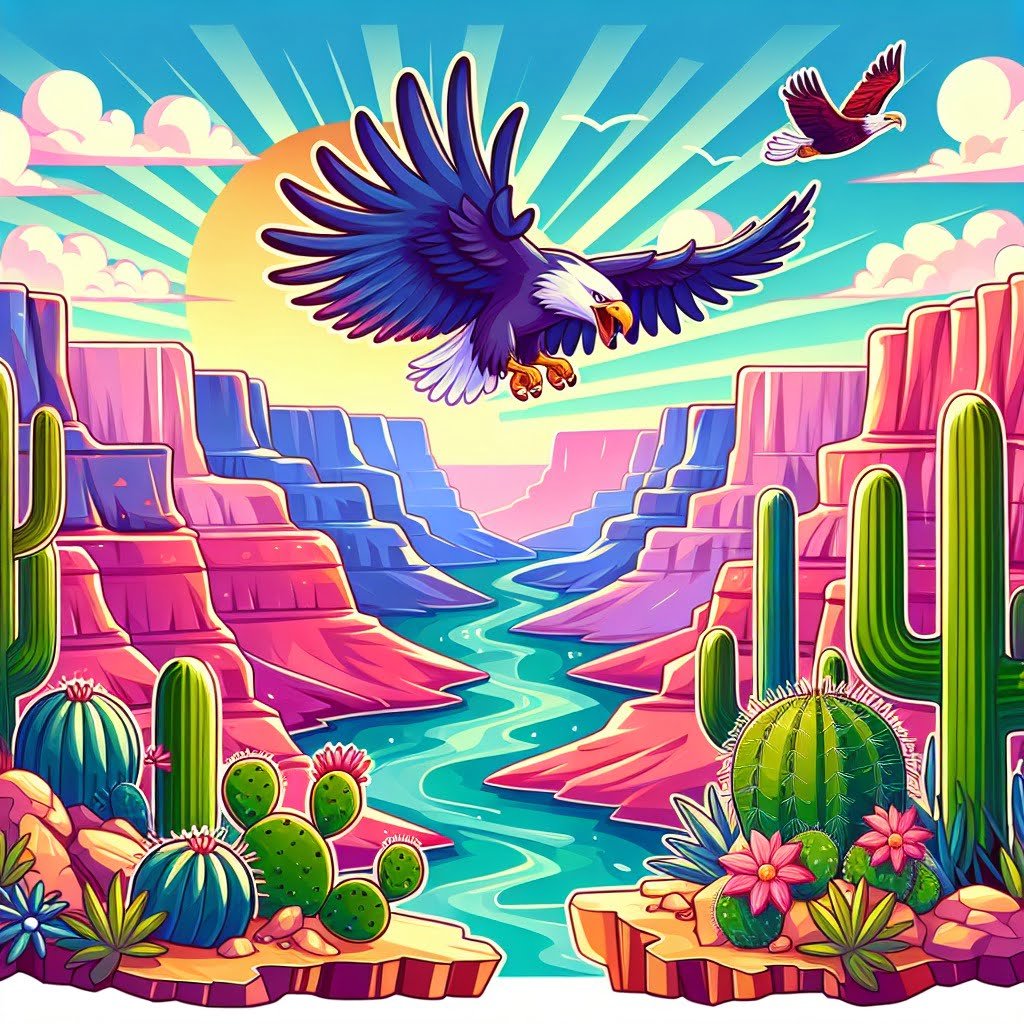
For younger kids: Arizona has a special nickname because of one of its famous landmarks!
For older kids: Due to the Grand Canyon’s iconic presence in the state, Arizona is often referred to as the “Grand Canyon State” in recognition of this stunning natural feature.
Detailed explanation:Arizona, also known as the “Grand Canyon State,” is a diverse and fascinating state located in the southwestern United States. This nickname is derived from the state’s most famous natural landmark, the Grand Canyon, which is one of the seven natural wonders of the world. The Grand Canyon is a massive, awe-inspiring gorge carved over millions of years by the Colorado River, and it attracts millions of visitors from around the world each year.
In addition to the Grand Canyon, Arizona is home to a wide variety of landscapes, including deserts, forests, mountains, and canyons. The state’s unique geography and climate have led to a rich diversity of plant and animal life, making it a popular destination for nature lovers and outdoor enthusiasts.
Another interesting fact about Arizona is its rich Native American history. The state is home to 22 federally recognized Native American tribes, each with its own unique culture, traditions, and history. Visitors to Arizona can explore ancient ruins, learn about traditional crafts and arts, and experience Native American cuisine and dance.
Furthermore, Arizona is known for its vibrant cities, including Phoenix, the state capital, and Tucson. These cities are bustling hubs of culture, entertainment, and commerce, offering a wide range of attractions, from world-class museums and galleries to award-winning restaurants and shopping districts.
In conclusion, Arizona is a state with a rich history, stunning natural beauty, and vibrant culture. Whether you are interested in outdoor adventures, cultural experiences, or urban exploration, Arizona has something to offer for everyone. So next time you are looking for a vacation destination, consider visiting the “Grand Canyon State” for an unforgettable experience.
Arizona Facts For Kids
3. Arizona has the Most Hummingbird Species in the U.S.
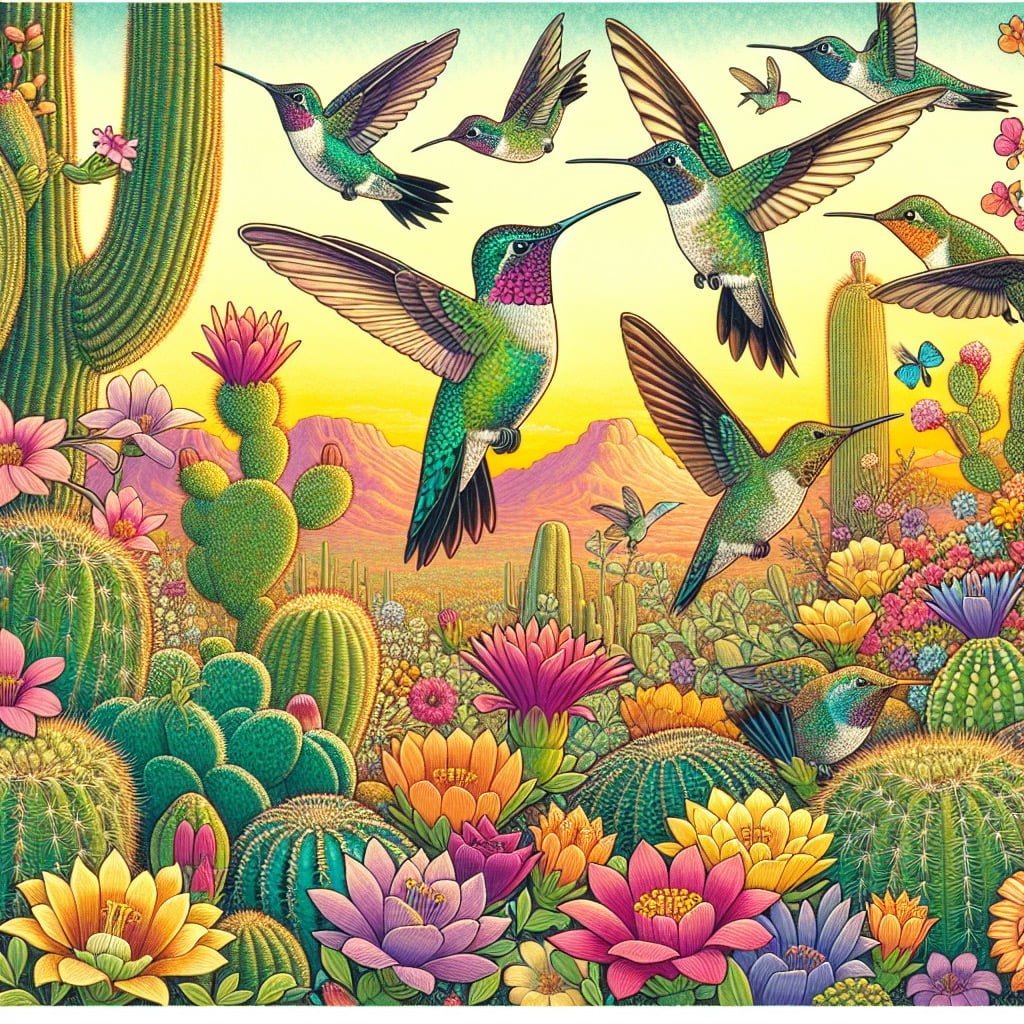
For younger kids: Arizona is a great place to see colorful hummingbirds flying around!
For older kids: With its diverse ecosystems, Arizona boasts the greatest variety of hummingbird species in the United States, making it a paradise for bird watchers.
Detailed explanation:Arizona Facts For Kids are not only interesting, but also educational. One of the fascinating facts about Arizona is that it is home to the most hummingbird species in the United States. Hummingbirds are small, colorful birds known for their rapid wing beats and ability to hover in place.
The diverse landscape of Arizona provides a variety of habitats for different species of hummingbirds. From the deserts to the mountains, these tiny birds can be found flitting about, feeding on nectar from flowers with their long, specialized beaks. Some of the common species of hummingbirds found in Arizona include the Anna’s Hummingbird, the Broad-tailed Hummingbird, and the Costa’s Hummingbird.
Arizona’s warm climate and abundance of flowering plants make it an ideal destination for these beautiful creatures. The state’s numerous nature reserves and parks also play a crucial role in providing a safe haven for hummingbirds to thrive.
For kids who are interested in birds and nature, learning about the variety of hummingbird species in Arizona can be both educational and entertaining. Observing these birds in their natural habitat can also help instill a sense of appreciation for the importance of conservation efforts to protect these delicate creatures and their habitats.
In conclusion, Arizona Facts For Kids are not only informative but also highlight the unique biodiversity found in this southwestern state. The abundance of hummingbird species in Arizona is a testament to the state’s rich natural heritage and the importance of preserving the environment for future generations to enjoy.
Arizona Facts For Kids
4. The Petrified Forest in Arizona Contains Fossilized Trees
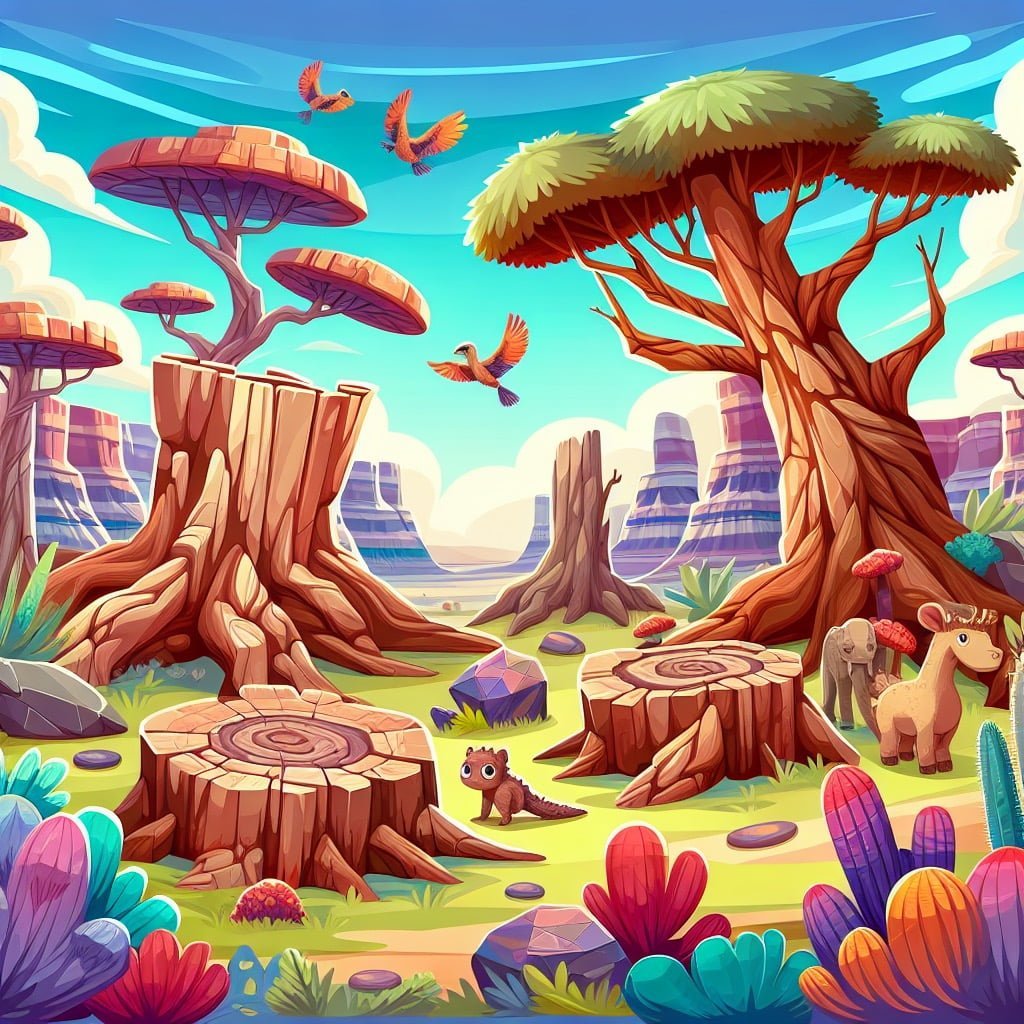
For younger kids: You can see trees turned into stone at the Petrified Forest!
For older kids: Arizona’s Petrified Forest National Park is home to petrified wood, ancient trees that have turned into stone over thousands of years, offering a glimpse into prehistoric times.
Detailed explanation:One of the most fascinating Arizona Facts For Kids is that the state is home to the Petrified Forest, which contains fossilized trees that date back millions of years. Located in northeastern Arizona, this national park is a unique and scientifically important site that showcases the natural history of the region.
The Petrified Forest was formed over 200 million years ago during the Late Triassic period when a large forested area was covered by volcanic ash. Over time, mineral-rich water seeped into the fallen trees, gradually replacing the organic material with silica, quartz, and other minerals. This process, known as petrification, resulted in the preservation of the trees’ original structures down to the cellular level.
Today, visitors to the Petrified Forest can see a breathtaking display of colorful petrified wood, with the logs appearing like sparkling jewels in shades of red, yellow, and blue. These fossilized trees provide valuable insights into the ancient ecosystems of Arizona and offer a glimpse into the geological processes that have shaped the landscape over millions of years.
In addition to the fossilized trees, the Petrified Forest also contains a variety of other ancient fossils, including dinosaur bones and plants, making it a treasure trove of scientific discovery. This unique combination of geological and paleontological wonders makes the Petrified Forest a must-see destination for anyone interested in the natural history of Arizona.
Overall, the Petrified Forest in Arizona is a remarkable testament to the power of nature and the fascinating processes that have shaped the Earth’s landscapes over time. By exploring this site, visitors, especially kids, can gain a deeper appreciation for the rich geological history of Arizona and the incredible diversity of life that has existed in the region.
Arizona Facts For Kids
5. Arizona has the Most Antelope Species in the United States
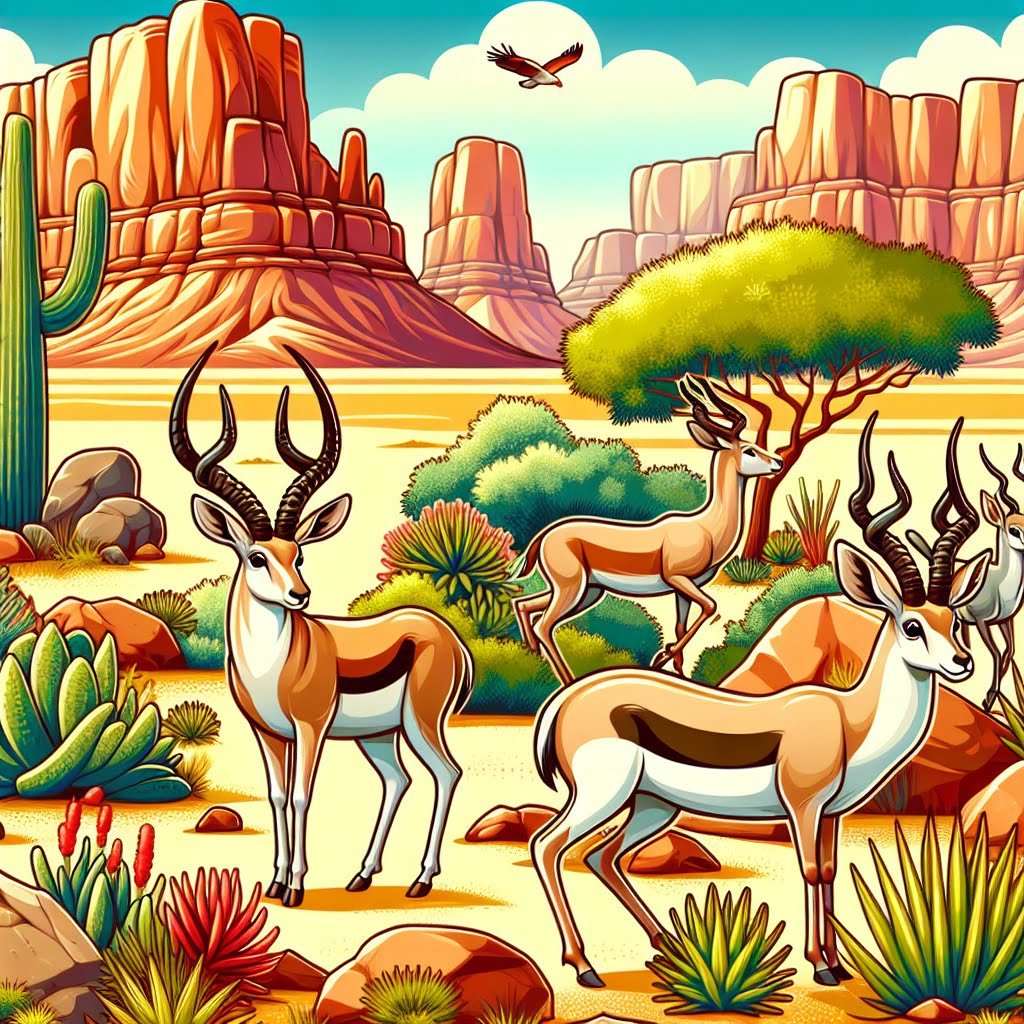
For younger kids: You can spot many antelopes running around in Arizona!
For older kids: Arizona boasts the highest number of antelope species in the U.S., including the iconic pronghorn antelope known for its incredible speed and agility.
Detailed explanation:Arizona is home to a diverse range of wildlife, including a variety of antelope species. In fact, Arizona has the most antelope species in the United States, making it a unique destination for nature lovers and wildlife enthusiasts. The state’s diverse ecosystems, ranging from deserts to forests to grasslands, provide the perfect habitat for these magnificent animals.
One of the most iconic antelope species found in Arizona is the pronghorn, also known as the American antelope. Pronghorns are known for their incredible speed, capable of reaching speeds of up to 55 miles per hour, making them the fastest land animals in North America. These graceful animals can be spotted roaming the grasslands and deserts of Arizona, where they graze on a diet of grasses, shrubs, and forbs.
In addition to pronghorns, Arizona is also home to other antelope species such as the blackbuck and the addax. The blackbuck, native to India, has been introduced to parts of Arizona and can be found in grasslands and savannas. The addax, a critically endangered species native to the Sahara Desert, has also found a home in Arizona’s desert landscapes.
Overall, Arizona’s diverse habitats and conservation efforts make it a prime location for antelope species to thrive. By preserving these habitats and protecting the wildlife that call them home, Arizona ensures that future generations of kids will have the opportunity to learn about and appreciate the incredible biodiversity of the state. Arizona Facts For Kids are not only educational but also a testament to the rich natural heritage of this southwestern state.
Arizona Facts For Kids
6. The Saguaro Cactus is Arizona’s State Flower

For younger kids: Arizona has a special cactus that looks like it’s waving at you!
For older kids: The Saguaro Cactus, with its towering height and unique silhouette, is not only Arizona’s state flower but also a symbol of the American Southwest.
Detailed explanation:Arizona Facts For Kids: The Saguaro Cactus, also known as Carnegiea gigantea, is not just any ordinary cactus. It holds a special place in the hearts of Arizonians as it is the official State Flower of Arizona. This iconic symbol of the American Southwest is a remarkable plant that can only be found in the Sonoran Desert, which spans across Arizona, California, and Mexico.
The saguaro cactus is a towering plant, often reaching heights of up to 40 feet or more and can live for over 150 years. Its unique silhouette with its upright branches reaching towards the sky has become synonymous with the desert landscapes of Arizona. These majestic cacti are an important part of the desert ecosystem, providing shelter and food for a variety of animals, including birds, bats, and insects.
One of the most fascinating aspects of the saguaro cactus is its ability to survive in the harsh desert environment. It has a shallow root system that extends outwards to capture as much rainwater as possible and a thick, pleated exterior that expands to store this precious water for times of drought. In addition, the saguaro cactus blooms beautiful white flowers in the late spring, which eventually turn into delicious red fruit that is enjoyed by both animals and humans alike.
In conclusion, the saguaro cactus is not just a plant, but a symbol of resilience and beauty in the arid landscapes of Arizona. Its designation as the State Flower of Arizona further solidifies its importance and significance in the cultural identity of the state. So the next time you see a saguaro cactus standing tall in the desert, remember that it is more than just a plant – it is a true emblem of the majesty of Arizona.
Arizona Facts For Kids
7. The Apache Trout is Arizona’s State Fish
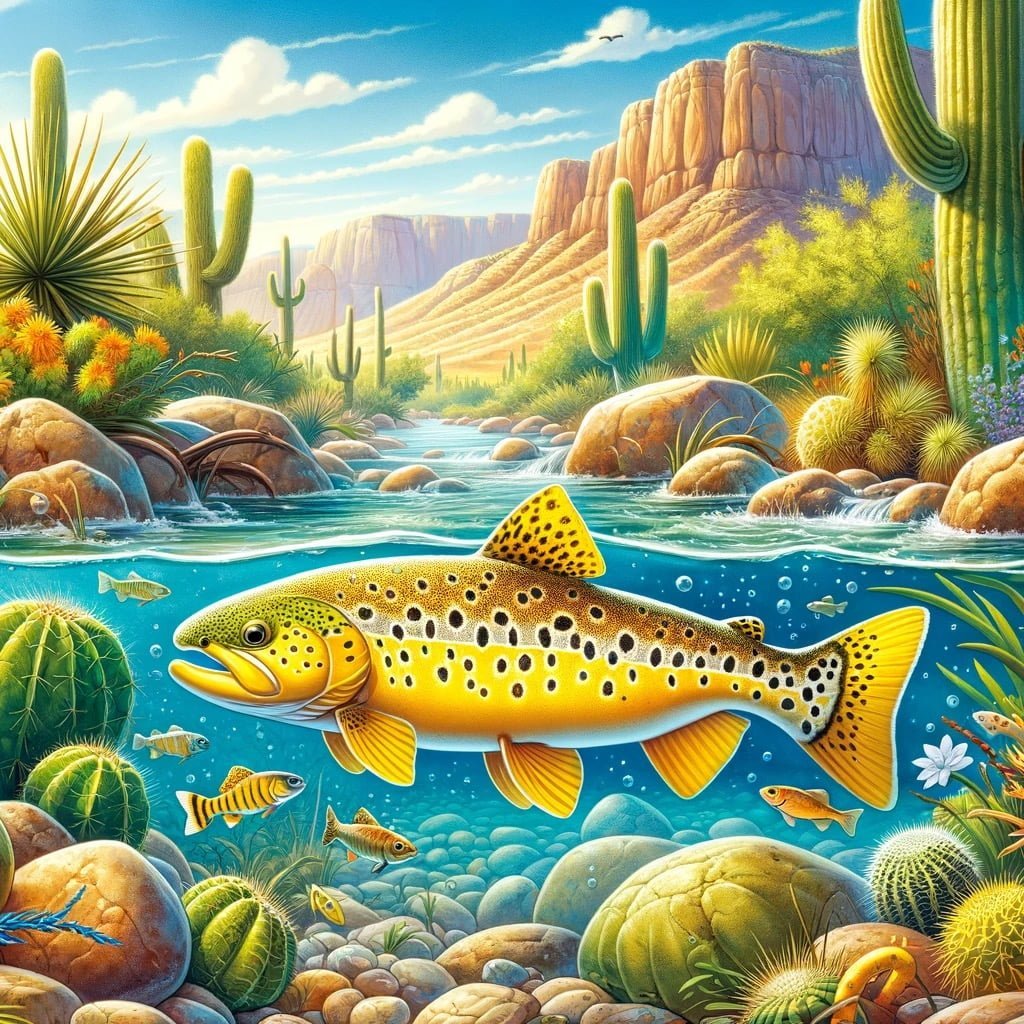
For younger kids: Arizona has a cool fish called the Apache Trout as its state fish!
For older kids: The Apache Trout, native to Arizona, is recognized as the state fish and is crucial for preserving the state’s aquatic ecosystems and biodiversity.
Detailed explanation:Arizona Facts For Kids: The Apache Trout, Arizona’s designated state fish, holds a special place in the hearts of many Arizonans. This unique species of trout is native only to the cold, clear streams of the White Mountains in eastern Arizona. The Apache Trout is distinguishable by its vibrant colors, with a golden body and rainbow-colored speckles along its sides.
The Apache Trout was designated as the state fish of Arizona in 1986 in an effort to highlight the importance of conservation and preservation of native species. Due to overfishing, habitat destruction, and competition with non-native species, the Apache Trout faced the threat of extinction. Conservation efforts by organizations such as the Arizona Game and Fish Department have helped to increase the population of Apache Trout in their native streams.
The Apache Trout is not only a symbol of Arizona’s natural beauty but also serves as a reminder of the importance of protecting our environment and native species. By designating the Apache Trout as the state fish, Arizona has shown its commitment to preserving its unique ecosystem for future generations to enjoy.
In conclusion, the Apache Trout stands as a testament to the natural diversity found in Arizona’s streams and rivers. Its designation as the state fish serves as a reminder of the fragile balance between human activity and the environment. By learning about and appreciating the Apache Trout, we can better understand the importance of conservation and the need to protect Arizona’s natural heritage for years to come.
Arizona Facts For Kids
8. Arizona’s State Reptile is the Arizona Ridge-Nosed Rattlesnake

For younger kids: Arizona has a snak that looks a bit different, and it’s the state reptile!
For older kids: The Arizona Ridge-Nosed Rattlesnake, with its distinct appearance and endangered status, was designated as the official state reptile of Arizona in 1986.
Detailed explanation:The Arizona Ridge-Nosed Rattlesnake holds the prestigious title of being Arizona’s State Reptile. This species of rattlesnake is native to the southwestern United States, particularly found in the state of Arizona. Known scientifically as Crotalus willardi, this unique snake can be easily identified by the distinctive ridge along its nose.
One interesting fact about the Arizona Ridge-Nosed Rattlesnake is its preferred habitat. These snakes are typically found in rocky, mountainous areas with an elevation ranging from 3,000 to 7,000 feet. They are known to seek shelter in crevices and rocky outcrops, where they can easily blend in with their surroundings and remain camouflaged from predators.
The diet of the Arizona Ridge-Nosed Rattlesnake primarily consists of smaller mammals such as rodents, lizards, and birds. They are equipped with venomous fangs that allow them to immobilize their prey before consuming it.
In terms of appearance, the Arizona Ridge-Nosed Rattlesnake is known for its striking coloration. It has a light gray to pale pinkish-brown body with darker bands or blotches running along its back. The distinct ridge on its nose helps differentiate it from other species of rattlesnakes.
As with all rattlesnakes, the Arizona Ridge-Nosed Rattlesnake plays a crucial role in its ecosystem by helping to control rodent populations. While they may strike fear in some people, these snakes are an important part of the Arizona desert’s biodiversity.
In conclusion, the Arizona Ridge-Nosed Rattlesnake is a fascinating reptile that represents the diverse wildlife found in Arizona. Its designation as the state reptile highlights the importance of conservation efforts to protect these unique creatures for future generations of Arizonans and nature enthusiasts alike. Remember, Arizona Facts For Kids can be both educational and captivating when exploring the natural world.
Arizona Facts For Kids
9. Arizona Leads the U.S. in Copper Production

For younger kids: Arizona helps make a lot of things with shiny copper!
For older kids: Arizona is the top producer of copper in the United States, contributing significantly to the country’s copper supply and supporting various industries that rely on this essential metal.
Detailed explanation:Arizona Facts For Kids: Arizona leads the U.S. in copper production, making it a key player in the mining industry. This fact can be attributed to the abundance of copper deposits found in the state, particularly in the southern region near the town of Morenci.
Copper is a valuable metal that is used in a variety of applications, including electrical wiring, plumbing, and electronics. Arizona’s copper mining industry plays a crucial role in meeting the demand for this versatile metal both within the United States and around the world.
The state’s leadership in copper production can be attributed to several factors, including its geology, mining infrastructure, and skilled workforce. Arizona’s unique geological landscape is rich in copper ore deposits, which are mined using advanced extraction techniques. Furthermore, the state has a well-established mining industry with modern facilities and equipment to support efficient copper production.
In addition, Arizona is home to a skilled workforce of miners, engineers, and support staff who ensure that the copper mining operations run smoothly. This dedicated workforce is essential for maintaining Arizona’s position as the top copper producer in the country.
Overall, Arizona’s leadership in copper production is a testament to the state’s natural resources, infrastructure, and human capital. By continuing to invest in the mining industry, Arizona can further solidify its position as a global leader in copper production.
Arizona Facts For Kids
10. Arizona’s State Mammal is the Ringtail

For younger kids: Arizona has a cute animal named the Ringtail as its state mammal!
For older kids: The Ringtail, known for its cat-like appearance and unique behavior, was designated as Arizona’s official state mammal in 1986, representing the state’s diverse wildlife.
Detailed explanation:Arizona Facts For Kids are not only educational but also fascinating, especially when it comes to the state’s official symbols like the Ringtail, which is Arizona’s State Mammal. The Ringtail, also known as the “miners’ cat” or “civet cat,” is a small mammal with a long, bushy tail and a pointed snout. It belongs to the raccoon family but has a more slender body and longer tail.
The designation of the Ringtail as Arizona’s State Mammal is significant because it reflects the state’s unique wildlife and natural heritage. The Ringtail is a skilled climber and can be found in a variety of habitats, including rocky areas, canyons, and desert regions. Its nocturnal habits and secretive nature make it a symbol of the state’s rugged and mysterious landscapes.
In addition to being a symbol of Arizona’s natural beauty, the Ringtail plays an important role in the ecosystem as a predator of insects, rodents, and other small animals. Its presence helps maintain a balance in the food chain and contributes to the overall health of the environment.
For kids interested in learning more about Arizona’s State Mammal, there are many resources available, including books, videos, and educational websites. By exploring Arizona Facts For Kids, children can gain a greater appreciation for the diverse wildlife that inhabits the state and develop a deeper understanding of the importance of conservation and environmental protection.
In conclusion, the Ringtail’s designation as Arizona’s State Mammal is a testament to the state’s rich biodiversity and serves as a reminder of the need to protect and preserve the natural world for future generations. Arizona Facts For Kids offer a wealth of information and opportunities for young learners to engage with the unique wildlife and habitats of the Grand Canyon State.
Did you know?
Did you know that Arizona is home to the world’s largest contiguous ponderosa pine forest?
Summary of Arizona Facts For Kids
Are you looking for fascinating facts about Arizona that will captivate and educate your children? Look no further than this blog post! From the awe-inspiring Grand Canyon to the diverse wildlife and natural wonders of the state, this post covers everything your kids need to know about Arizona. Discover why Arizona is known as the “Grand Canyon State,” learn about the abundant hummingbird species and antelope populations, and explore the unique state symbols such as the Saguaro Cactus and Apache Trout. With engaging information and captivating images, this blog post is a fun and educational resource for children of all ages. Don’t miss out on unlocking the wonders of Arizona with your little ones!
Sources and additional information for Arizona Facts For Kids
WikipediaBritannicaCIA World FactbookCentral Intelligence Agency (CIA)The World BankUnited Nations Children’s Fund (UNICEF)BBC NewsLonely PlanetCouncil on Foreign RelationsThe World Factbook (CIA)United NationsBBC Country ProfilesLonely PlanetThe World Bank CountriesUNESCO World Heritage CentreCountryReportsGlobalEdge (Michigan State University)Transparency International – The Global Corruption Barometer
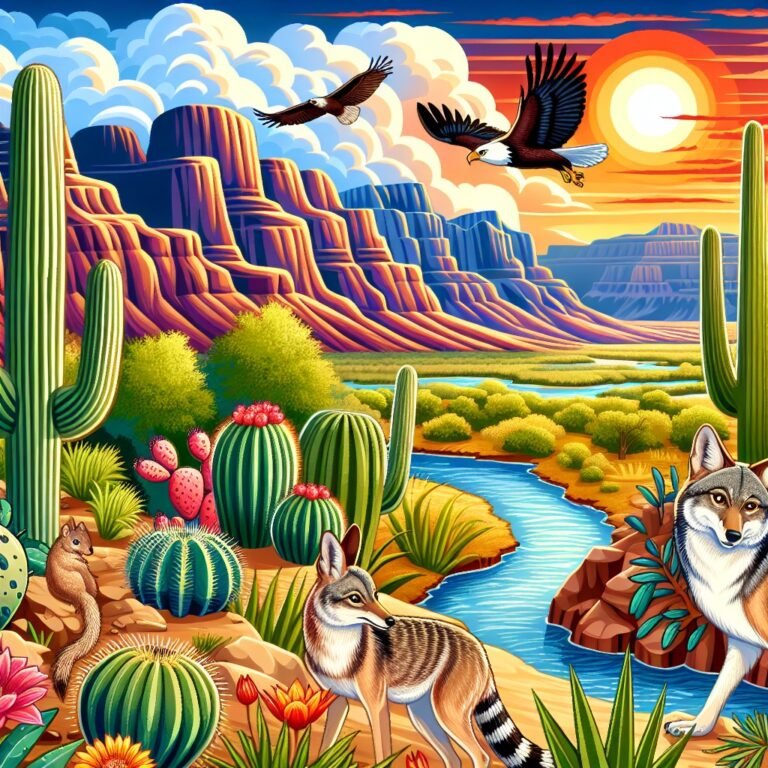


![Uncover 10 Awesome Texas Facts For Kids 15 Main image for the post with 10 Awesome Texas Facts For Kids] depicting Texas in a colorful and attractive way for kids.](https://funfactsbook.com/wp-content/uploads/2024/03/texas_facts_for_kids.jpg)
